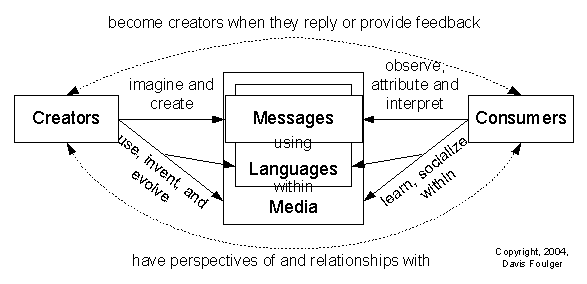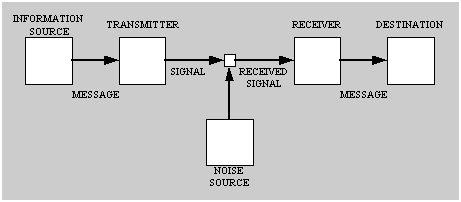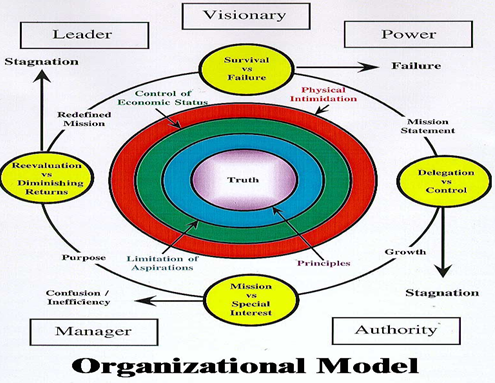Abstract
Organizations have been in existence ever since humanity came into existence. Within these organizations, there has been a need for communications plans and proper organizations models so that there is a proper and smooth operation. Human beings do communicate differently and these in turn affects organizational operations, as they are the people who make up these organizations.
There have been several ways identified for human communications by experts in this field. Communication is a field that is so wide in relation to other sectors. Therefore, people have proposed the rise of the many models ever since the time of Aristotle to present times.
As wide as it is, it includes the various disciplines such as journalism, anthropology, rhetoric, and psychology amongst many others. This paper will tend to look into one of these very many communications model and one organizational model analyzing them side by side to come up with various weaknesses and problems that might arise from the use of such a communications model. The main analysis style will be the AMA 8-step process.
Introduction
Communication amongst human beings is particularly valuable, and understanding of the same is supposed to be in the priorities of organizations that intend to remain relevant in the market.
Human communication is concerned with the conveyance of information from one source to the other, and this rule underscores the reason why the field has various models that look at it from different perspectives (Littlejohn, & Foss, 2008, p. 69). The entire process, however, aims at initiating and inculcating development amongst the people involved.
As there are unusually many organizations in existence, so there are so many organizational models in existence, all of which serve different organizations’ various roles and objectives. Since human beings form an organization, there is a need to build a strong base of faithful organization members, a fact that is elusive without proper communication (Miller, Vandome, & McBrewster, 2009, p. 88).
Hence, the need for any organization that needs to thrive, to identify with one model of communication that acts, as a guide to all the organization’s communications needs is paramount.
Some communication models will look at communication from the perspective of information a receiver needs to communicate, whereas other will give importance to the fact that the sender initiates the process and thus, the person needing the communication the most. Some scholars in defining the term human communications have used this view.
A famous definition of communication existed that many people have taken to use, because of its ease and the extent to which it summarizes the occurrences in a communication process. This supposition underscores the definition of communication simply as being “who says what, where, when, to who, through what channel or medium, and with what purpose or intention” (Lasswell, Lerner, & Pool, 1952, p. 12).
Therefore, communication models vary depending on the situation and place where the need to communicate do arise. However, all these models will narrow down to a simple model of communication that has the sender conveying information to the receiver as is seen in the figure below of a Simple communication’s model (Foulger, 2004, p.45). Figure 1.0

There have been remarkably many communication models in use, some of which were developed in the 20th century and others that are continually being developed on a day-by-day basis the source being the different organizational performance.
This has seen the move and transformation of the way organizations communicate, from the ancient egalitarianism to the current Darwinism that focuses on the fact that people do not have equal access and rights to economic, political, and social aspects of the world. Communications scientists who have their roots in the propagandas studied amongst the mass media in the 20th centuries identify themselves mostly with the transmission model of communication (Miller, 2005, p. 87).
Organizations also need to develop a model that will govern its operations under all circumstances, because this model is also, what will guide the leadership and operational activities of any organization. This paper will look at the Shannon Communication model and the Matrix organizational structure to evaluate the problems that might arise in the company or organization that adopts the same.
Shannon Communication’s model
Shannon communication model is a model of communication, developed back in 1948. People have largely regarded it as the basis for all the other modern communication models. It denotes a model that has thrived so much to eliminate so many unimportant components of the communication’s process leaving only what it considers key to the communications process (Shannon, 1948, p.382).
This model has been considered successful by the fact that it does not only point out why communication happens, but also goes ahead to point at some of the things that lead to communication failures. One can summarize the entire model as seen below.

To establish the problems associated with Shannon’s communication model, this paper will look at a typical organization that uses the organizational model below.
This model of the organization is where all information distributed within the organization aims at releasing the truth. In all levels, there are controls and checks to ensure the clearing, of all information released, of suspicion and emerge to be the best and be in the best interest of the organization.

Problems
The analysis of the problems associated with this form of communication model and organization model will follow the AMA 8-step process.
Step 1: The discovery step- in this step, there are the salient facts that are associated with Shannon Communication’s model, as identified these above. However, it is necessary to note that, organizations are moving from the era where everybody will stand out as equal to an era talked about by Darwin: people receiving resources and economic exposures according to their individual ability. This then leads us to step two.
Step 2: Many see Shannon’s model not just as a communication’s model, but also as the process of conveyance of information from the source to the receiver. A problem would arise, mainly because the model puts emphasis on the need of the sender to push message to the receiver.
This can lead to some unforeseen problems. Practically, users of information have been found to be active not passive; hence, they choose the information they need as is the case elaborated by the uses and gratification theory of communication.
Therefore, this model sees that information transmission from the sender to the receiver is the key role of the communications medium or channel. This model again sees communication as being direct and that it always occurs in one direction, a situation that is not the case in real life.
Step 3: Analysis-The first problem that might arise is miscommunication if the organization relies fully on Shannon’s communications model. This is because whereas the model suggests that the sender should compel the receiver of the information to receive information, the receivers are always active people.
By forcing the reception of the message, the sender may rest thinking that the message was decoded as he thought whereas, in the real sense, coercion might have led to lack of communication. Therefore, this scenario can lead to miscommunication and largely, communication’s breakdown (Bell & Smith, 1999, p. 124).
The next possible problem would be wrong communications feedback. The intention of communication is always to obtain feedback: positive or negative.
However, the assumption of this model that communication is direct and always occurs one way would mean that the sender would not pay attention to the issues raised by the receiver of a message since their role is to receive only. Therefore, in essence the communication process will qualify as ineffective.
Another possible problem that would arise from the use of this model in an organization is that the model will act as a barrier to communication. It is fixed. In addition, it does not allow room for healthy communication. This would make an organization fail to execute its planned objectives and goals.
Step 4: Possible Solutions-The problems that do arise out of the use of Shannon’s communication model can be solved by the realization that communications is not a one thing but a two-way issue.
Therefore, while applying the Shannon’s communication model, the user (communicators) should be aware of the fact that both the dispatcher and the beneficiary lie within the brackets of the process and are active rather than passive participants.
Therefore, they should receive the due importance they deserve. In addition, the users should be aware that there is communication without feedback; hence, it is not unidirectional, and users should pay attention to both facts.
Step 5: Solution evaluation-The solution that can be lasting to the problems is the use of an amalgamation of two or three communications models. This is because whereas one may have a loophole, the other one acts as a check and balance and a solution to the other model’s problems.
Step 6: Decision-making-The best solution to this problem is to use it hand in hand with the contemporary communication’s model that gives importance to communication as being complete only with the attainment of feedback. This step, when used with the Shannon’s model, will ensure perfect communications since all aspects of a communication’s process will receive maximum care.
Step 7: Execution – To ensure this solution works, the people within an organization should go through all the components of a communication process. Moreover, they should be aware of the importance of each aspect. These should be the sender, message, receiver, barriers (noise), channel (medium) and the feedback.
In the implementation stage, one has to follow all guidelines to ensure that the process gives the desired results. The participants should be well informed for precision purposes.
Step 8: Measurement-The suggested organizational model proposes a situation where all employees take part in the communication of truthful messages. The success of the use of the suggested solution will come out through monitoring performance and gauging the level of cooperation between the organization’s employees.
This step is decidedly crucial because measuring and monitoring of performance underlines the true progress of any activity.
Conclusion
The use of any communication model is in itself not a solution to the organizational communication needs. Proper understanding and implementation facilitate the success of any communication model that a company decides to use. Moreover, the organizational model also plays a critical role in deciding the success of the model.
In other words, organizations should choose communication models that fit into the organizational model. This understanding, therefore, calls for organizations to use models interchangeably to ensure they succeed. Applying different models allow management to decide on the communication model that fits a given organization best and through adopting the best model; the organization will achieve its objectives.
References
Bell, A., & Smith, D. (1999). Management Communication. New Jersey: John Wiley & Sons, Inc.
Foulger, D. (2004). Models of the Communication Process. Web.
Lasswell, H., Lerner, D., & Pool, I. (1952). The comparative study of symbols: an Introduction. California: Stanford University Press.
Littlejohn, S., & Foss, K. (2008). Theories of human communication. Belmont, CA: Thomson Wadsworth.
Miller, F., Vandome, A., & McBrewster, J. (2009). Communication Theory. Mauritius: VDM Publishing House Ltd.
Miller, K. (2005). Communication Theories: Perspectives, Processes, and Contexts. Boston, MA: McGraw-Hill Higher Education.
Severin, W., & Tankard, J. (2009). Communication theories: origins, methods, and uses in the Mass media. Boston: Addison Wesley Longman.
Shannon, A. (1948). Mathematical Theory of Communication. Bell System Technical Journal, 27(6), 379-656.